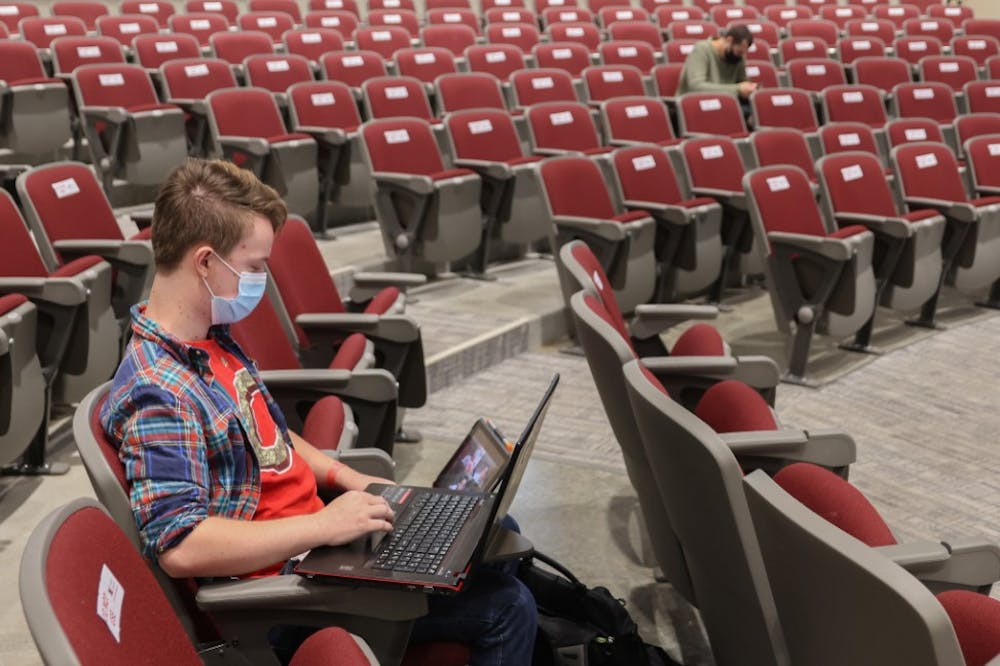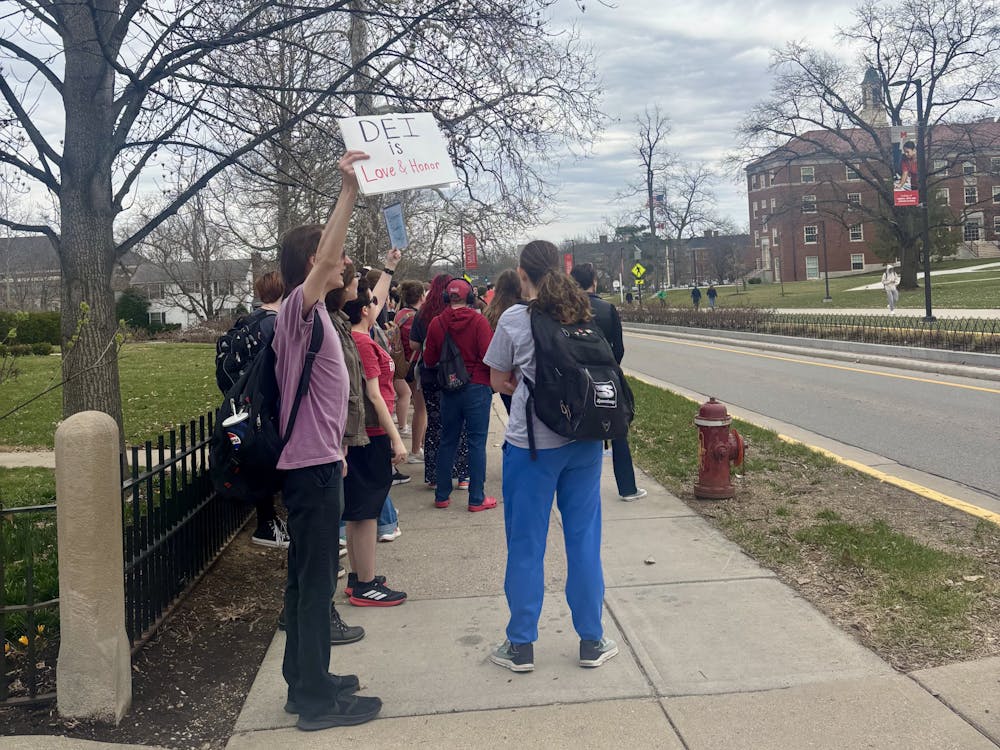For Miami University photographers Jeffrey Sabo and Scott Kissell, typically their job is to document Miami’s year-to-year history. But this past year, the abnormally empty spaces that filled their pictures emulated the experience of living through a once-in-a-lifetime event.
On March 17, a compilation of Sabo and Kissell’s pictures was sent out in a weekly COVID update email from Miami’s COVID Response Team. The slideshow of pictures, titled “Through the lens: Pushing through the pandemic,” includes pictures from March 2020 until now.
“The images are a stark reminder of why we MUST do our individual parts to fight the spread of COVID-19,” the email read.
Kissell said the title of the slideshow was inspired by the shift from the uncertainty at the beginning of the pandemic, to the hope that students brought with them as they returned to campus in the fall.
“I started capturing people coming back, and I thought to myself, ‘We’re going to get through this, we’re going to figure this out,’” Kissell said.
For Sabo, the slideshow provides viewers with the opportunity to reflect on the things the past year has put everyone through.
“I hope [the slideshow] sparks emotion, either good or bad,” Sabo said. “I certainly want them to kind of look back and go, ‘Well, we made it, and it was rough.’ I think the images tell the story of how resilient the students and the university and everybody is through a pandemic that none of us have seen in our lifetime and hopefully [people] learn from it.”
Sabo has worked at Miami since 1984 and said he has never seen campus as empty as it was at points during the pandemic.
As students were leaving campus in March 2020, Sabo snapped a picture of the empty archway in the Farmer School of Business.
“That was probably the most eerie image that I shot,” Sabo said. “There was just nobody, and it was quiet. Even in the summer over the years, it quiets down, but there’s still activity, there’s still people, and for me to come on and campus and see nothing … it was very eerie to be around here during that time.”
Kissell said it was important for him and Sabo to provide historical documentation for Miami’s photo archive.
“Photos are kind of like time machines,” Kissell said. “You go back and can look at them and because they’re frozen in time, you can really reflect back [on] the emotion of the moment.”
Enjoy what you're reading?
Signup for our newsletter
Kissell said taking pictures was hard when the campus was nearly lifeless.
“It’s been a challenge,” Kissell said. “When we’re in normal mode, there’s lots of stuff going on here and then, all of a sudden, everyone [was] remote … so that makes it more challenging just to get images.”
Kissell said they’ve done their best to capture different moments on campus because the past year is important to the history of the university.
“Despite this pandemic, we continue to learn; we figured it out,” Kissell said. “It wasn’t ideal but, you know, I think that’s what I’ve learned through photographing this. I was so happy to see people back on campus this semester; there’s so much energy, there’s so much more optimism, and we’re getting vaccines and I’m excited for what the future looks like.”
Sabo echoed Kissell’s sentiment.
“I think that’s the biggest thing, is just the history of what happened,” Sabo said. “Photographers and journalists will tell the honest story and will show images that are true to life. The New York Times photographers all the way down to the university photographers … all of our [stories] are a little different, but it still tells the same historical story of what everybody went through.”




